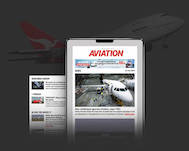Melburnians could be able to book a ‘flying taxi’ via an Uber-style app in just five years’ time after Embraer signed a landmark agreement to bring the tech to the Victorian capital.
Under the terms of the deal, the planemaker’s subsidiary, Eve Urban Air Mobility, will provide aviation taxi platform Ascent with access to 100 of its electric vertical take-off and landing (eVTOL) aircraft.
Ascent hopes to use its 100,000 allocated hours of flying time to service the Victorian capital as well as Bangkok, Manila, Singapore, and Tokyo as soon as 2026.
The business’ platform is currently used to book helicopters, but it has long-planned to transition to eVTOLs.
The new deal expands on an earlier partnership between the two, penned in June, which focused on accelerating the development of the Urban Air Mobility ecosystem in the Asia-Pacific region.
“Ascent is one of the greatest players of Urban Air Mobility in the Asia-Pacific and its strong presence in the region makes it an ideal partner for Eve’s operations,” said Andre Stein, president and CEO of Eve.
“The region holds a massive demand for transportation disruption that can be filled with our low-emission aircraft. This is the right recipe for sustainable growth.”
Embraer’s Eve has developed both a zero-emission low noise eVTOL vehicles as well an Urban Air Traffic Management (UATM) system, which is currently being trialled in conjunction with the UK Civil Aviation Authority.
The news comes after Eve and Airservices Australia announced their own partnership in December 2020, and revealed the initial concept of operations (CONOPS) for the flying taxi market in Melbourne.
The partnership also hopes to aid in the development of Eve’s UATM solutions, helped by Australia’s government support of UAM solutions, and strong aviation safety record.
“The creation of the UAM ecosystem requires innovative solutions, which is also a fundamental pillar of Embraer’s growth strategy for the coming years, and EmbraerX was built to address these needs,” said Daniel Moczydlower, president and CEO of EmbraerX, of which Eve is its first spin-off.
“Through this partnership, we are jointly embarking on the first steps toward Australia becoming one of the world’s first Urban Air Mobility markets.”
Using the City of Melbourne as a model, the CONOPS examines how existing air traffic management solutions can initially enable UAM operations while simultaneously preparing for scale of operations through new traffic management technologies.
“This exciting initiative combines Airservices’ experience as the national airspace manager with the technical innovation of Embraer,” said Peter Curran, chief customer experience and strategy officer at Airservices.
“We have the responsibility of keeping our skies safe, and we are excited to leverage our significant expertise and operational capabilities in airspace management and partner with a global aviation expert to develop innovative solutions that ensure safe and equitable access to the urban airspace for a broad spectrum of aircraft, including conventional helicopters, fixed-wing aircraft, and eVTOL aircraft.”
Lionel Sinai-Sinelnikoff, founder and CEO of Ascent, said, “Eve’s innovative technology, combined with its manufacturing expertise and global servicing footprint through Embraer, comfort us in bringing a solution fitting the region’s complex requirements.
“With Ascent operating system onboarding Eve’s fleet and connected to Eve’s UATM, air operator partners will be empowered to elevate UAM operations at scale.”






David
says:How will they deal with:
Troublesome customers?
Marginal VFR/IFR conditions and breach of standards for a fare?
Driver (pilot fatigue) if not highly regulated?
Lack of maintenance due to slim margins and competition?
Wake turbulence in windy conditions around buildings?
Why have say, R44s or R66s not captured this kind of market in the past?
Nicholas
says:The two operative words in this article.
Could and may…..
Raymond
says:this sounds like pie in the sky.
Passenger-carrying VTOL like this are the engineer’s dream, like warp drives.
The problem is to carry on board enough energy to provide the power for this very inefficient method of flying.
Even liquid fuel engines , with twenty times the energy density of the best batteries, would struggle to do this.
Has anybody got a prototype actually working, or is this another “first to publish” stunt?